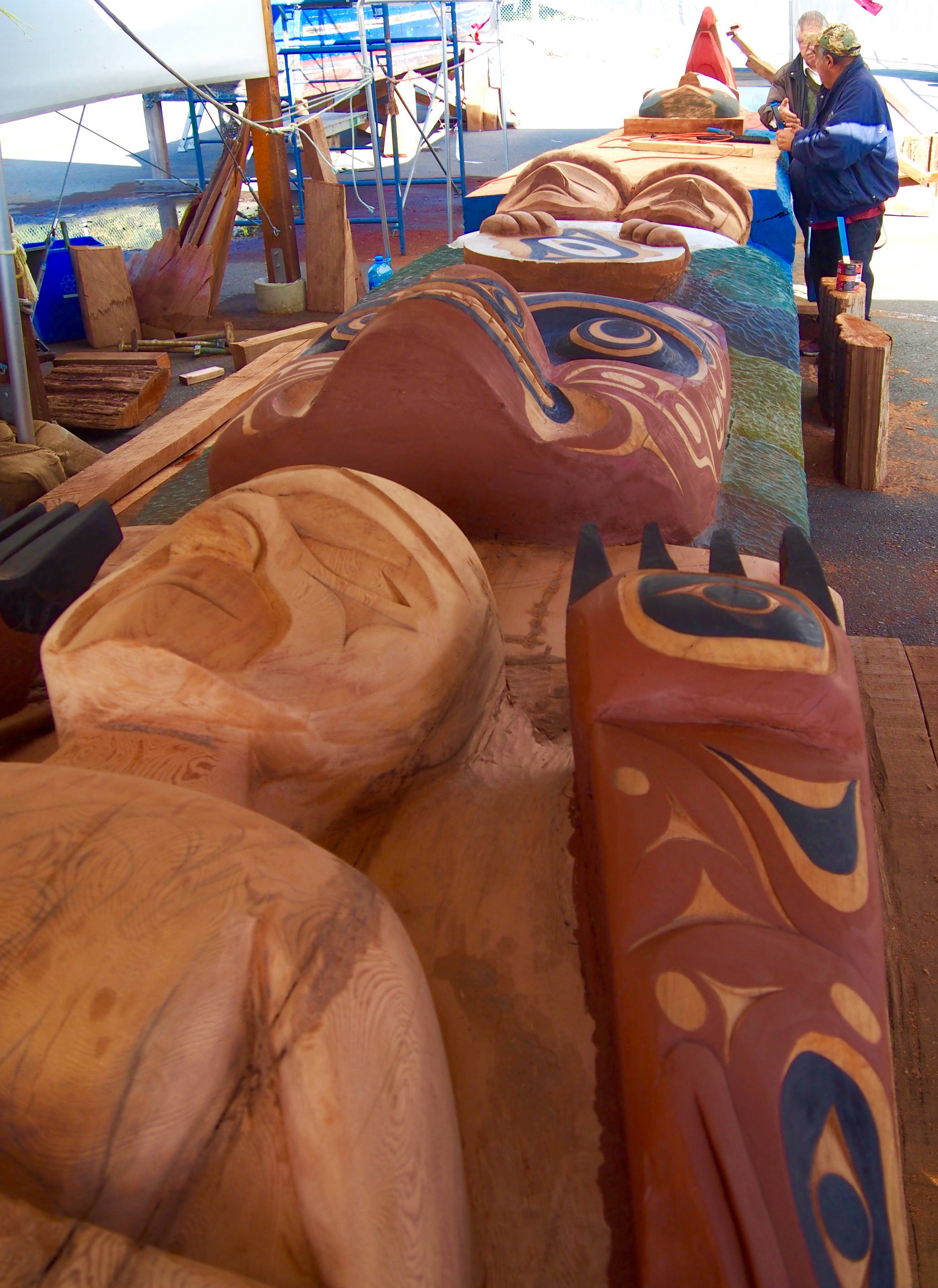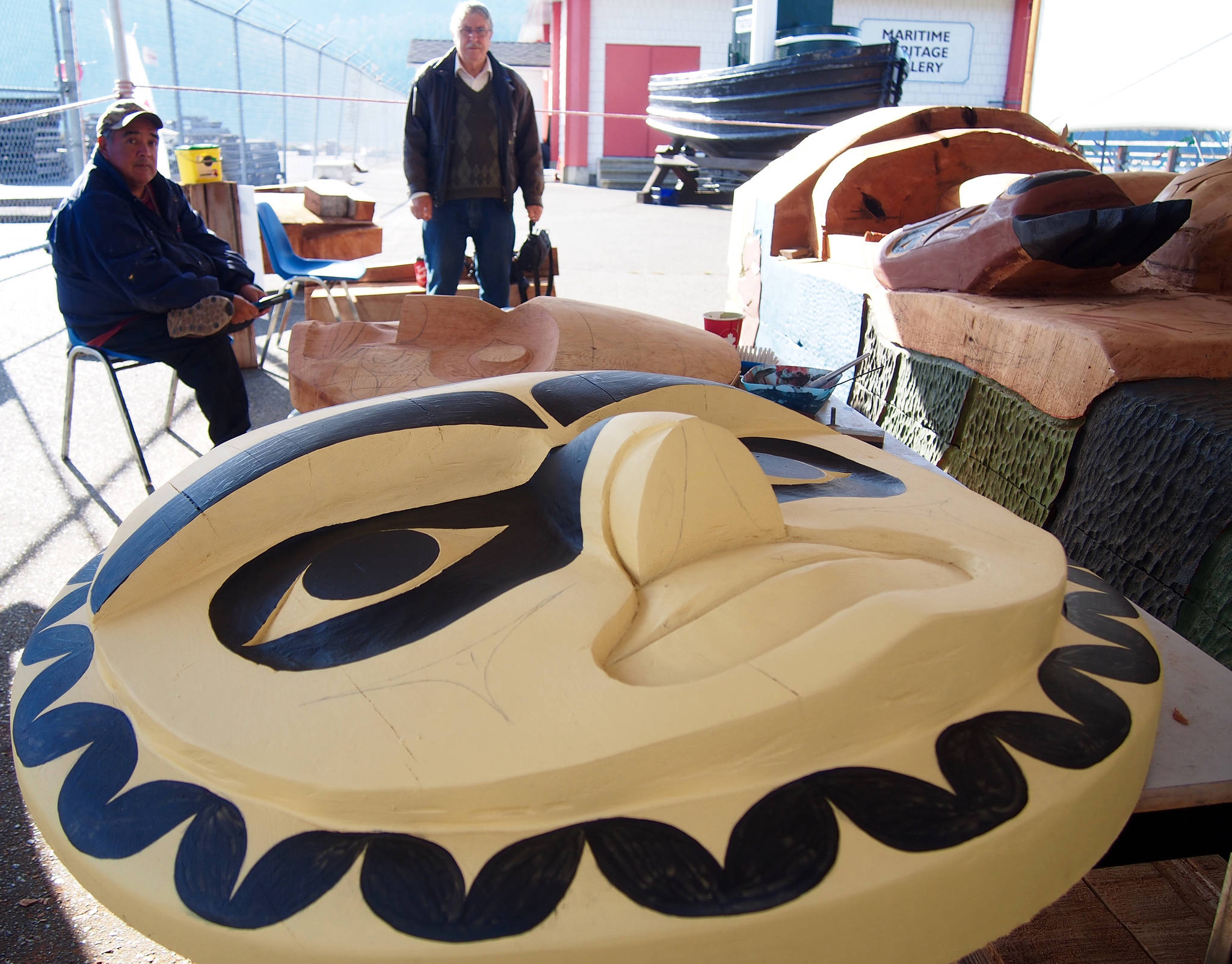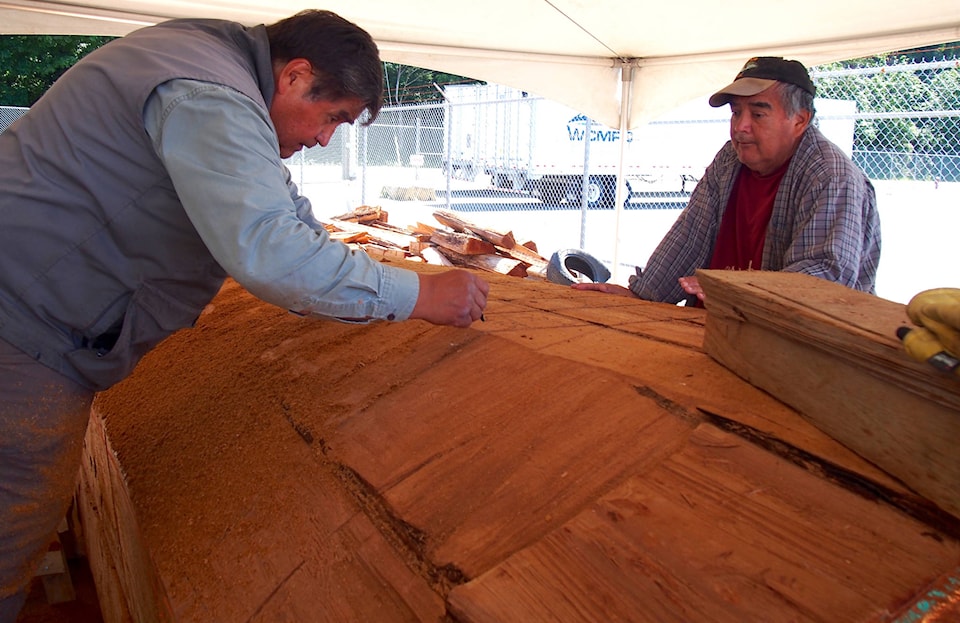MIKE YOUDS
SPECIAL TO THE NEWS
UPDATE: The First Nations Education Foundation (FNEF) announced on Nov. 5 that it has agreed to keep the Language Revitalization Pole in Port Alberni in response to increasing community calls for it to remain in the city. The carving phase of the project is approaching completion and the next phase, in which the pole will be raised, will follow in 2020.
Despite major hurdles over the last six months, the hewing of an Indigenous language revitalization pole has grown into a spiritual journey for carvers and a catalyst for community.
At a work site provided by the Port Alberni Port Authority (PAPA) next to the Maritime Museum, a team of volunteers under the direction of Nuu-chah-nulth carver Tim Paul has transformed a fallen 800-year-old cedar recovered from the woods near Bamfield last winter.
WATCH: 800-year-old carving log arrives in Port Alberni
With support from volunteers, they’ve done “radical surgery” on the partly decayed log, chiselled 10 Nuu-chah-nulth relatives from its wood and brought the effort close to completion despite a lack of funding.
“It’s been amazing to watch the carvers at work and to watch it emerge from the wood,” said Ken Watson, president of the Maritime Heritage Society, which hosted a public update on Oct. 24.
Jeff Cook, a hereditary Huu-ay-aht chief who attended residential school in Port Alberni, fully appreciates the pole’s importance. At age six, he understood Nuu-chah-nulth but lost his language when taken from his community at age six.
“It was heart-wrenching for my parents,” he recalled. “It was a traumatic experience for a six-year-old. This is why we want to renew our culture.”
Cook described the pole as an attempt to symbolize cultural renewal. As such, it makes people think about the long journey and resilience of the Nuu-chah-nulth people.
First Nations Education Foundation (FNEF), a not-for-profit group focused on reversing the loss of Indigenous languages, commissioned the pole in recognition of 2019 as UN International Year of Indigenous Languages. Huu-ay-aht First Nations gifted the 70-foot, 60,000-lb. log to the FNEF last winter before it was trucked to the harbour work site.
READ MORE: Language revitalization pole project runs out of money
At the outset, the pole was destined for UVic. Concerned that a shortfall could jeopardize the project, FNEF issued a plea for donations in July. That attracted greater community support and the pole’s ultimate destination remains open to discussion, Cook said.
“It was never about funding,” said assistant carver Cecil Dawson, a Dzawada’enuxw First Nation carver who has worked with Paul on past projects. “Do it from the heart and do it to make people feel good,” he added, quoting Paul.
Travellers from all over have visited the work site. Two in particular imbued the pole with greater spiritual power for the carvers. Blessings came from Leroy Little Bear of the Blood Reserve Blackfoot Confederacy in Alberta and Rose Thater Braan-Imai of Tuscarora Six Nations in California. That changed everything, Dawson said.
He believes the tree, which grew to maturity when Nuu-chah-nulth peoples thrived along the west coast, was predestined to bring stories of the past to the future. Centred around 10 Nuu-chah-nulth relatives embodied in elements of nature, the pole designed by Paul speaks of caring for the Earth, the land and water, “everything,” Dawson explained.
To tie such a vision to money alone would be to diminish its meaning. Instead, challenges have become integral to the journey. The more that carvers welcomed others to the site, the more the pole became a community project.
“We had to put Humpty Dumpty back together again,” Dawson said. “That speaks for our language as well as the pole.”
Discussions with UVic continue even as local support grows for keeping the pole in Port Alberni. Sponsors and donors are sought for a food and fashion fundraiser on Nov. 22, 6-9 p.m. at the Italian Hall. Tickets, $65, are available online through Eventbrite.
“Wherever it’s going, it’s going to be OK,” Dawson said. “It’s pulled us together as a community. It’s pulled us together as Port Alberni.”
This story has been edited to correct an incorrect statement about funds diverted from the language revitalization pole project.


